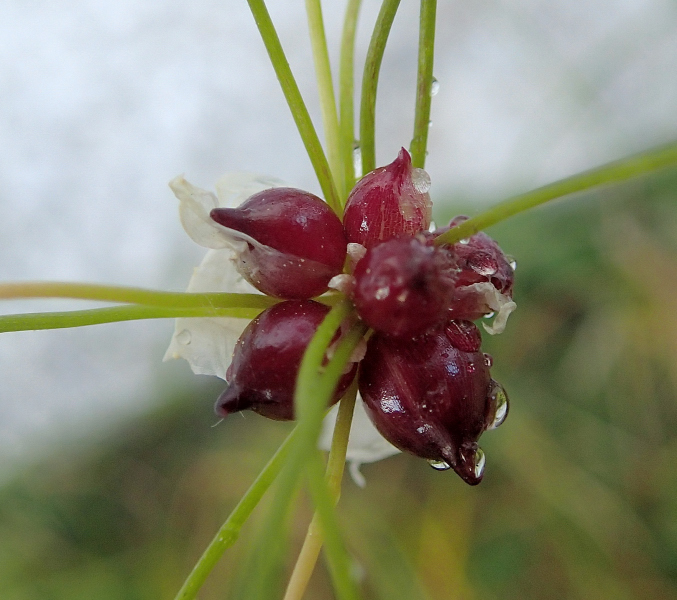The Amaryllidaceae family is a group of plants that includes around 75 genera and over 1,000 species, primarily distributed in tropical and subtropical regions. This family comprises herbaceous, mostly bulbous plants, many of which are highly appreciated for their ornamental flowers. Notable genera in this family include Amaryllis, Narcissus (daffodils), Galanthus (snowdrop), and Hippeastrum (often associated with amaryllis). Plants in the Amaryllidaceae family are primarily cultivated for ornamental purposes, but some species also have medicinal properties.
General Description
Plants in the Amaryllidaceae family typically exhibit the following features:
- Leaves: The leaves are generally long, narrow, and linear, arranged alternately or in a rosette. The leaves are often fleshy and shiny, adapted to retain water in dry environments.
- Flowers: The flowers of Amaryllidaceae plants are typically large and showy, with six petals arranged in two concentric circles. The colors of the flowers can range from white to yellow, pink to red, depending on the species. The flowers are often fragrant and develop in umbrella-like or cluster-shaped inflorescences.
- Fruits: The fruit is typically a capsule containing multiple seeds, which are generally dispersed by the wind or by animals.
- Growth: The plants in this family are herbaceous perennials, often with bulbs or corms from which the flowers and leaves emerge. Bulbs serve as storage organs for the plant, allowing it to survive during drought or cold periods.
Chemical Composition
Plants in the Amaryllidaceae family contain various chemical compounds that may have medicinal or toxic properties:
- Alkaloids: Many species in the Amaryllidaceae family contain alkaloids such as narcissine and galanthamine, which have stimulating effects on the central nervous system. Galanthamine, in particular, is used in the treatment of Alzheimer's disease to improve memory and cognition.
- Saponins: Some species, such as Galanthus nivalis (snowdrop), contain saponins, compounds with antimicrobial and anti-inflammatory properties.
- Flavonoids: The Amaryllidaceae family contains flavonoids, which provide antioxidant and anti-inflammatory effects.
- Tannins: Plants in this family may contain tannins, which have astringent and antioxidant properties.
Physical Properties
- Size: Plants in the Amaryllidaceae family vary in size, from small herbaceous species like Narcissus to larger plants with showy flowers like Hippeastrum. Most species are relatively small, ranging from 20 cm to 1 meter in height, depending on the genus.
- Flowers and Fruits: The flowers are generally large and showy, often white, yellow, or red in color. The fruits are typically capsules that open to release seeds.
- Bulbs and Corms: A defining feature of the Amaryllidaceae family is the presence of bulbs or corms, which allow the plant to survive under difficult climatic conditions, such as drought or cold.
Production and Harvesting
The Amaryllidaceae family is primarily cultivated for ornamental purposes:
- Amaryllis (Amaryllis spp.): Amaryllis species, such as Amaryllis belladonna, are cultivated for their showy flowers and are often used in gardens or containers.
- Narcissus (Narcissus spp.): Daffodils are highly prized in gardening, particularly during the spring season. They are cultivated for their fragrant and vibrant flowers, which come in shades of white, yellow, and pink.
- Galanthus (Galanthus nivalis): Snowdrops are among the first flowers to bloom in spring, and they are very popular in gardens for their delicate appearance and white flowers.
- Hippeastrum (Hippeastrum spp.): Often sold as Amaryllis (though a different genus), Hippeastrum is cultivated for its large, colorful flowers, often used as houseplants.
Applications
Medicinal
Some species of the Amaryllidaceae family are used in traditional medicine, although caution is advised due to their toxicity:
- Galanthamine: Galanthamine is an alkaloid found in some Amaryllidaceae species and is used in the treatment of Alzheimer's disease, as it helps improve cognitive function and memory by increasing acetylcholine levels in the brain.
- Anti-inflammatory Effects: Some compounds found in Amaryllidaceae, such as saponins, have anti-inflammatory effects and have been used in folk medicine to treat conditions like arthritis and inflammation.
- Anticancer Properties: Alkaloids and flavonoids found in some species have shown potential anticancer properties in preliminary studies.
Ornamental
Plants in the Amaryllidaceae family are primarily cultivated for ornamental purposes:
- Amaryllis (Amaryllis spp.), Narcissus (Narcissus spp.), Galanthus (Galanthus nivalis), and Hippeastrum (Hippeastrum spp.) are all highly popular in gardens, flower beds, and as potted plants for their showy flowers. These plants are also used in floral bouquets and as houseplants.
Culinary
Although species in the Amaryllidaceae family are not commonly used in cooking, some plants from this family, such as the narcissus, have been historically used in certain culinary traditions. However, it's important to note that some species can be toxic and should not be consumed without proper preparation.
Environmental and Safety Considerations
While the Amaryllidaceae family offers many benefits, there are some important considerations:
- Toxicity: Some species in the Amaryllidaceae family, such as Narcissus and Amaryllis, contain toxic compounds like alkaloids, which can cause symptoms of poisoning such as nausea, vomiting, and stomach distress if ingested. It is important not to consume these plants without the supervision of experts.
- Sustainability: Overharvesting of wild Amaryllidaceae species for medicinal or ornamental purposes could threaten local populations. Sustainable farming practices are essential to ensure the continued availability of these plants.
INCI Functions
- Anti-inflammatory: Reduces inflammation and soothes irritated skin.
- Antioxidant: Protects the skin from oxidative damage caused by free radicals.
- Antibacterial: Helps fight bacterial skin infections.
- Moisturizing: Helps keep the skin soft and hydrated.
Conclusion
The Amaryllidaceae family is a group of plants that are primarily grown for ornamental purposes, including Amaryllis, Narcissus, Galanthus, and Hippeastrum, which are highly valued for their showy flowers. Some species also have medicinal applications, particularly Galanthamine, used in the treatment of Alzheimer's disease.
![]() Amaryllidaceae
Amaryllidaceae 

